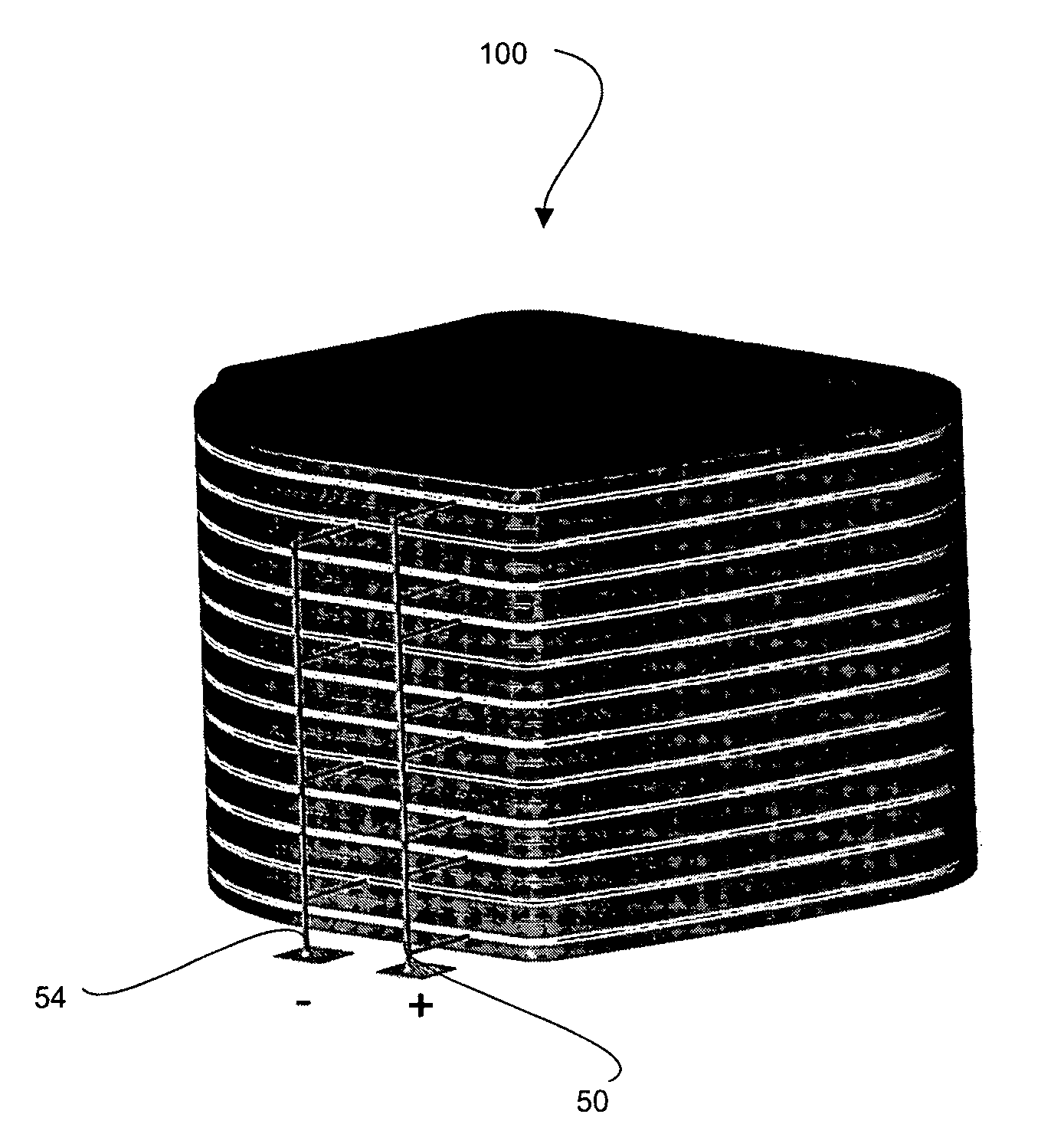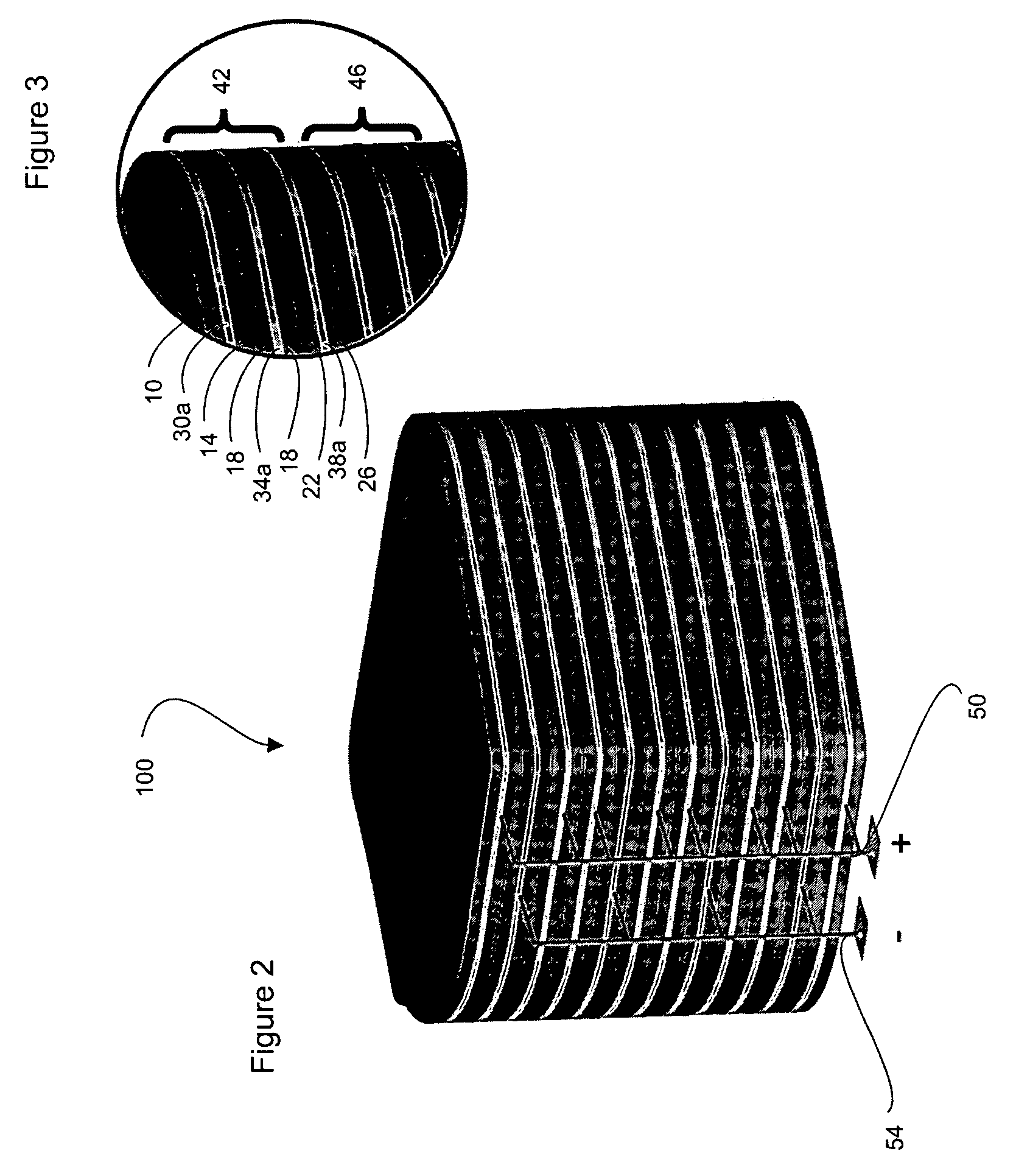Conformal lithium polymer battery
a lithium polymer battery, lithium polymer technology, applied in the field of lithium polymer batteries, can solve the problems of not yet being implemented, available space within a battery-powered device that does not conform to the standard battery geometries and sizes, and is often left unused, etc., to achieve efficient construction
- Summary
- Abstract
- Description
- Claims
- Application Information
AI Technical Summary
Benefits of technology
Problems solved by technology
Method used
Image
Examples
Embodiment Construction
[0023]While the present invention is described herein with reference to illustrative embodiments for particular applications, it should be understood that the invention is not limited thereto. Those having ordinary skill in the art and access to the teachings provided herein will recognize additional modifications, applications, and embodiments within the scope thereof and additional fields in which the present invention would be of significant utility.
[0024]FIG. 1 is an exploded diagram of a one cell of a standard (prior art) lithium polymer battery. Lithium polymer batteries are composed of a stack of cells. The common configuration of each cell has an anode layer 18 sandwiched between two cathode layers 10, 26. These cells are then stacked one on top of another to provide the desired battery thickness.
[0025]Lithium polymer batteries have the same common electrochemistry as conventional lithium ion batteries—they have lithiated oxide cathodes 10, 26 and a graphite anode 18 held to...
PUM
| Property | Measurement | Unit |
|---|---|---|
| temperature | aaaaa | aaaaa |
| temperature | aaaaa | aaaaa |
| diameter | aaaaa | aaaaa |
Abstract
Description
Claims
Application Information
 Login to View More
Login to View More - R&D
- Intellectual Property
- Life Sciences
- Materials
- Tech Scout
- Unparalleled Data Quality
- Higher Quality Content
- 60% Fewer Hallucinations
Browse by: Latest US Patents, China's latest patents, Technical Efficacy Thesaurus, Application Domain, Technology Topic, Popular Technical Reports.
© 2025 PatSnap. All rights reserved.Legal|Privacy policy|Modern Slavery Act Transparency Statement|Sitemap|About US| Contact US: help@patsnap.com



